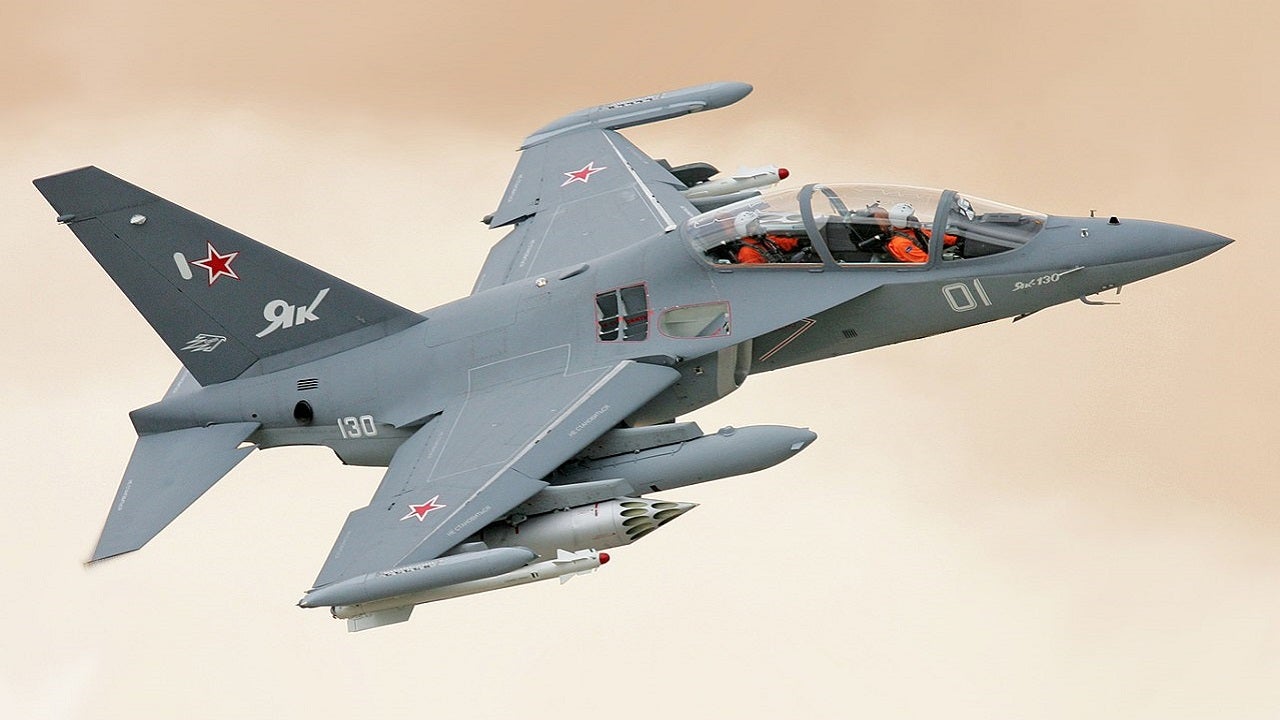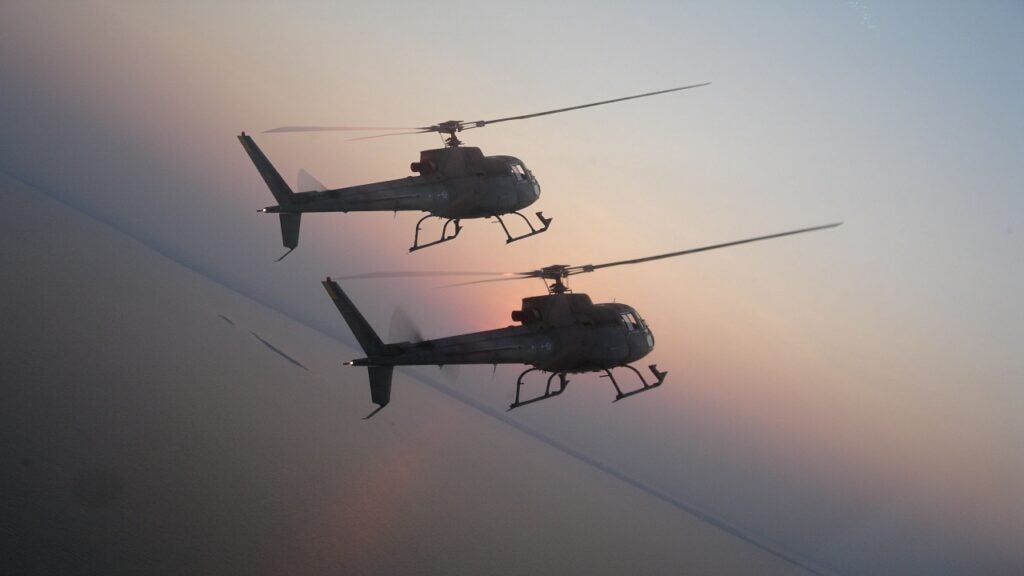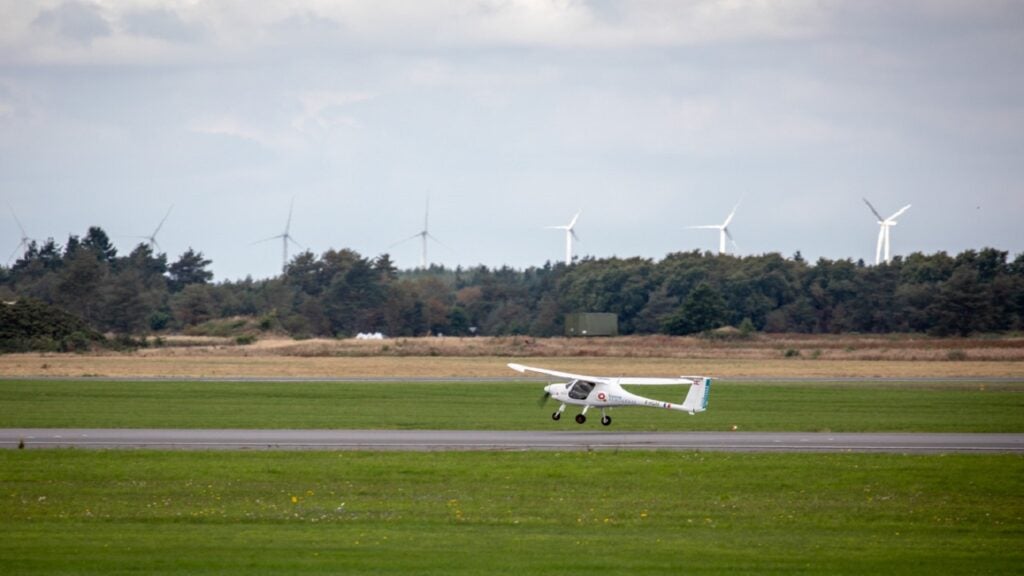
The Yak-130 combat trainer was selected as the winner of the trainer competition of the Voyenno Vozdushnyye Sily, Russian Federation Air Force, in April 2002. The aircraft is also actively marketed for export by Yakovlev, the Irkut company, and by Rosoboronexport.
The Russian Air Force has a future requirement for 300 Yak-130 aircraft that can be deployed as a light strike aircraft or as a trainer for a range of fourth or fifth-generation fighters. An order was placed for the first 12 aircraft to replace ageing Aero Vodochody L-39 Albatros in 2002.
The aircraft entered service in the Russian Federation Air Force at the military pilot training academy in Krasnodar in July 2009 and was showcased in the MAKS 2009 air show.The production line for the aircraft at the Aviation Plant Sokol in Nizhny Novgorod, known as NAZ Sokol, is fully operational and the roll out of the first production series aircraft took place in May 2003. A series of flight tests of the serial production aircraft was started in April 2004.
The Russian Air Force ordered official testing in May 2005. The full trials of the advanced combat trainer, including spin and combat tactics trials, were completed in December 2009 prior to delivery of the first two production aircraft to the Russian Air Force.
The first Yak-130 ordered by the Russian Air Force completed its flight acceptance test at Sokol in August 2009. The Russian Air Force received the first four of 12 Yak-130s between February 2010 and April 2010. Another five aircraft were delivered in April 2011.
In December 2011, the Russian Ministry of Defence placed an order with Irkut for the delivery of 55 Yak-130 combat trainers by 2015. The first batch of six aircraft was delivered to the Russian Air Force in October 2012. The second batch of three Yak-130s was delivered in November 2012. The aircraft deliveries were completed in early 2015.
The Russian Air Force commenced pilot training operations of the new Yak-130 combat aircraft in April 2013, however a Yak-130 plane crashed near Akhtubinsk in the Astrakhan region in April 2014.
The aircraft performed a flight with advanced digital avionics suite developed by KRET in June 2014.
International orders and deliveries
In March 2006, it was announced that Algeria had placed an order for 16 Yak-130 trainers. The first flight of the Yak-130 built for Algerian Air Force was completed in September 2009. In September 2011, the Algerian pilots were permitted to take solo flights on the aircraft after completion of three months theoretical and practical trainings. Deliveries were concluded in 2011.
In January 2010, the Libyan Air Force ordered six Yak-130 aircraft. The Vietnamese Air Force ordered eight Yak-130 aircraft.
In December 2010, the Kazakh Defence Minister signed an agreement with his Russian counterpart to use the Yak-130.
In December 2012, the Belarusian Defence Ministry signed a contract with Irkut for four Yak-130 combat-trainers that were delivered in 2015. The Belarusian Air Force received four aircraft in 2016, while four more aircraft were delivered in May 2019.
Bangladesh placed an order for 16 Yak-130s in January 2014. The Russian MoD placed an order for the supply of an additional 12 Yak-130 aircraft in February 2014. The delivery was completed in 2016.
The Myanmar Air Force received three Yak-130 aircraft in late 2016, while six more trainers were delivered in December 2019. The Algerian Air Force operates 16 Yak-130 aircraft.
A total of 36 Yak-130 aircraft were scheduled to be delivered to Syria by 2016 but the delivery was postponed due to the ongoing conflict in Syria.
Vietnam signed a $350m deal for the purchase of 12 Yak-130s from Russia, in 2019.
Yak-130 development
A joint programme for trainer development between Yakovlev of Russia and Aermacchi of Italy began in 1993 and the Yak / AEM-130D demonstrator first flew in 1996. In 1999, the partnership was dissolved and the Yakovlev Yak-130 and the Aermacchi M346 became separate programmes.
By the second quarter of 2003, the Yak-130 prototype had successfully completed 450 flights, including high-manoeuvrability flight demonstrations such as a controlled angle of attack of 42°.
The Yak-130 completed the first stage of state joint tests in April 2009 which includes incorporating basic armaments. It arrived at Lipetsk Air Base in February 2010.
The Yak-130 has a maximum g-loading of +8g to -3g and is capable of executing the flight manoeuvres specific to current operational and developmental combat aircraft, including Su-30, MiG-29, Mirage, F-15, F-16, Eurofighter, F-22 and F-35.
Other variants of the Yak-130 considered included a navalised carrier-based trainer aircraft, a lightweight reconnaissance aircraft and an unmanned strike aircraft.
Combat trainer design
The Yak-130 production aircraft is slightly different from the Yak-130D demonstrator, with lower weight, a more rounded nose to accommodate a radar, a shorter fuselage length and a lower wing area.
The Yak-130 is of classical swept-wing and empennage monoplane design and light alloy construction with carbon-fibre control surfaces. Kevlar armour protection is fitted to the engines, cockpit and avionics compartment.
The moderately swept high-lift wing and the all-moving low-mounted tail plane allow the pilot to choose high angles of attack. For short airfield performance the aircraft is equipped with leading edge slats and three-position Fowler flaps.
The Fowler flaps are split flaps which move rearward and then downward on tracks to give a large increase in lift and high lift and drag for landing manoeuvres. The airframe is designed for a 30-year service life with 10,000 hours flying time or 20,000 landings.
The Yak 130 aircraft can be operated from unpaved runways and small unprepared airfields as the aircraft’s landing gear is designed with high take-off. A complex fly-by-wire control system installed enables the aircraft to feature automatic flight control system, active flight safety system, training stability and controllability characteristics.
All-digital cockpit
The aircraft has an air-conditioned and pressurised two-seat tandem cockpit fitted with NPO Zvezda K-36LT3.5 zero-zero ejection seats. The pilots have all-round view through a blister canopy. The forward pilot has a view over the nose to -16°. The rear pilot has a view to -6°.
The production Yak-130 is the first Russian aircraft with an all-digital avionics suite. The avionics meets Mil Standard 1553 and can be adapted to the customer’s requirements.
The aircraft has an all-glass cockpit. Both pilot positions are night vision goggle compatible and equipped with three multifunction 6in x 8in colour liquid crystal displays.
The pilot in the forward cockpit can use the helmet-mounted sight for target designation. The cockpit is fitted with an MS internal and external communication and voice warning system supplied by AA.S. Popov GZAS joint stock company.
The Avionica fly-by-wire flight control system is used to adjust the stability and controllability characteristics and flight safety systems to simulate a number of aircraft such as the MiG-29, Su-27, Su-30, F-15, F-16, F-18, Mirage 2000, Rafale, Typhoon and future fighters such as the F-35.
The pilot selects the software model of the simulated aircraft’s control system on the Yak-130 on-board computer. The pilot can select the model during flight. The system can be forgiving to allow cadet pilots the easy acquisition of piloting skills.
The open architecture avionics suite includes two computers and a three-channel information exchange multiplexer. The navigation suite includes laser gyroscopes and GLONASS / NAVSTAR global positioning.
Weapons
The Yak-130 combat trainer can simulate the tactics of different combat aircraft. There is one centreline fuselage hardpoint and the number of wing hardpoints for the suspension of
weapons payloads has been increased to eight with six underwing and two wingtip points, increasing the combat payload weight to 3,000kg.
The aircraft can carry weapons, suspended fuel tanks, reconnaissance pods and a range of electronic warfare pods including radar jammers and infrared countermeasures.
An open architecture avionics suite installed on the Yak-130 allows a wide range of western weapon systems and guided missiles to be integrated including the AIM-9L Sidewinder, Magic 2 and the AGM-65 Maverick.
Weapons fits include the Vikhr laser-guided missile, R-73 infrared-guided air-to-air missiles (Nato designation AA-11 Archer) and the Kh-25 ML (Nato designation AS-10 Karen) air-to-surface laser-guided missile. A Platan electro-optical guidance pod is installed under the fuselage for deployment of the KAB-500Kr guided bomb.
The aircraft is fitted with a 30mm GSh-301 cannon or a podded GSh-23 cannon installed under the fuselage. It can also deploy unguided B-8M and B-18 rockets, 250kg and 50kg bombs and cluster bombs.
Yak-130 radar
The Yak-130 is fitted with the 8GHz to 12.5GHz Osa or Oca (Wasp) radar developed by NIIP Zhukovsky. The radar has the capacity to track eight airborne targets simultaneously, simultaneously engage four targets at all angles and simultaneously track two ground targets. The detection range against 5m² cross section targets is 40km in the rear direction and 85km in the forward direction. The lock-on range for operation in automatic tracking mode is 65km.
The radar, which has adaptive waveforms and sidelobes, has a surface mapping mode which includes image freezing and zooming on areas of interest.
An alternative radar fit is the Kopyo (Spear) radar. The aircraft can also be fitted with a podded Platan (Palm Tree) infrared search and track targeting system.
Countermeasures
The electronic warfare suite includes a chaff and flare dispenser, a radar warning receiver and active jammers.
Turbofan engines
The aircraft has a high thrust-to-weight ratio of about 0.85. The demonstrator is powered by two Slovakian Povazske Strojarne DV-2SM turbofan engines, each rated at 2,200kg thrust.
Production aircraft are fitted with two powerful high-economy AI-222-25 turbofan engines, each rated at 2,500kg thrust and developed under a Russian and Ukrainian program by Motor Sich, Zaporozh’e Progress Design Bureau and the Moscow Salyut Motor Building Production Enterprise. The export variant of the Yak-130 can be fitted with the DV-2SM engine.
The internal fuel tanks, comprising two wing tanks and a centre fuselage tank, carry up to 1,750kg of fuel. With two suspended fuel tanks (each 450l) the maximum total fuel load is 2,650kg. The aircraft is fitted with single point pressure or optional gravity refuelling. The aircraft can be fitted with an in-flight refuelling probe.
The export variant of the Yak-130 can be fitted with the DV-2SM engine.
According to the customer country’s requirement, the aircraft can be fitted with an in-flight refuelling probe.



